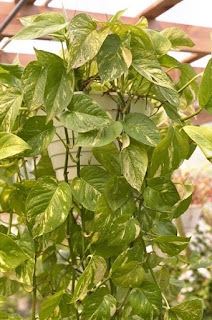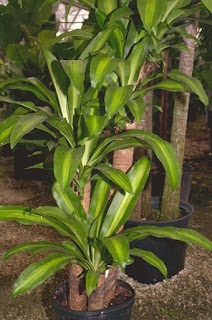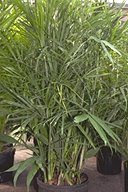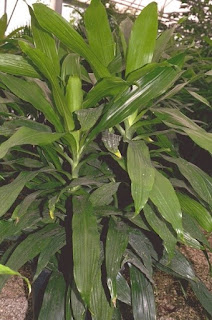Modern humans have
used their magnificent brains to make our lives easier such as telephones, cell
phones, cars, computers, airplanes, and other vehicles that can travel even
greater distances. Today, we have become a little wasteful with our natural
resources and we need to rethink how we use these natural resources
efficiently.
People all over the
world are beginning to read and see the signals that planet Earth has been
sending and our working together to protect our home planet Earth and to
restore the places that have been hurt, like Everglades National Park.
What is the source
of our energy? The sun. Living things use chemical, heat, and forms of light
energy to produce and consume food. Energy and food are nature’s way of
recycling nutrients through the environment. I like to explain how energy flows
through our ecosystem and how matter recycles.
What or who can
use the sun’s light energy to begin the process of making food and recycling
nutrients? Green plants. Yes, that is right the green plants, if animals and
humans did not have green plants they would not be here today. Green plants
start the recycling process.
What do plants
have that we do not have? Cell Wall, Chlorophyll, and a Central Vacuole,
(larger in plants than animals).
Green plants are
able to manufacture their own food because of Chlorophyll. Plants use Chlorophyll to capture light energy
from the sun to start the process known as Photosynthesis. Photo means light
and Synthesis means put together. Combining the two words means: put together
with light.
Light energy
combines carbon dioxide from the air that is taken in through the leaves and
H2O (water) that is absorbed through the roots of plants to manufacture a
simple sugar known as glucose. The plant stores this sugar (glucose) as starch
and uses it to grow. During photosynthesis oxygen is released into the
environment. Animals and humans depend on oxygen to breathe. When animals and humans
breathe the oxygen, it combines with the food they eat and releases chemical
and heat energy that their body uses to grow. This process is called
respiration and CO2 (Carbon Dioxide), is the waste product of respiration.
Let’s start with a
history of plants from prehistoric plants to present day. Prehistoric plants
include whiskfern, mosses, horsetails, and ferns from the Paleozoic era; and
bald cypress, ginkgos, cycads, magnolias and palms from the Mesozoic era. Horsetails
and ferns are considered the first land plants and the oldest. Scientists
believe their spores created new plants and lead to the gymnosperms. Flowering
plants or the angiosperms were the last to appear and now are the most
prevalent species on the planet. They include: trees, shrubs, perennials,
annuals, and lianas. Lianas are a type of climbing vine found on the tropical
rainforests floor. They have thick, woody stems and depend on the rainforest
trees for support. Lianas include Rattan palms and Philodendrons.
Psilotum –
Whiskfern is a living fossil, dichotomously branched.
Sphagnum – Mosses
absorbs liquids up to 20 times their weight.
Equisetum –
Horsetail has underground rhizomes; the outer layer of cells is embedded with
silica which gives an abrasive texture. Horsetail is often called scouring
rushes because it was used to scrub pots and pans during the pioneer days.
Ferns include
three species: Adiantum spp., Athyrium spp. and Dryopteris erythrosora.
Adiantum is represented by the Maidenhair Ferns; Athyrium species is
represented by the Lady Ferns; Dryopteris species is represented by the Autumn
Ferns.
Gymnosperms became
the dominant plant with the dinosaurs. The gymnosperms include Cycads, Ginkos
and Conifers. The Conifers include: Pines, Firs, Spruce, Larches, Yews,
Junipers, Cedars, Cypresses, and Redwoods. The dinosaurs ate Conifers, Cycads,
and Ginkos.The flowering plants or angiosperms include a wide range of plants.
I would like to show you examples of a few.
Palm trees are considered the oldest of the
angiosperms or flowering plants. The Windmill
palm (pictured left) and the Pindo
Palm (pictured right) are considered the oldest palms.
Royal Poinciana Tree (Delonix regia) and Hong
Kong Orchid Tree (Bauhinia x blakeana) are in the Fabaceae family which has
a symbiotic association with Mycorrhizae fungi. The Mycorrhizae takes a form of Nitrogen from the
air, N₂ and fixes the Nitrogen to a form the plant can use immediately. The Royal Poinciana Tree (pictured left)
and Hong Kong Orchid Tree (pictured
right).


Pitcher
plant or Winged Nepenthes (Nepenthes alata) are Carnivorous Plants that make their own carbohydrates from photosynthesis
but obtain some of their nitrogen and minerals by killing and digesting
insects. The traps are usually equipped with glands that secrete digestive
juices. Pitcher plants use a pitfall to capture insects. The insects slip into
a long funnel containing the juices in the bottom. After the insect drowns, it
is digested by enzymes secreted by the juices of the plant. Pitcher plant (pictured below left).
Sensitive Plant (Mimosa pudica)
Sensitive Plant shows how a plant can move.
The movement you see in the sensitive plant is caused by turgor pressure. Turgor
pressure is the pressure exerted on a plant cell wall by water passing into the
cell by osmosis. Osmosis is the movement of a solvent such as water through
semipermeable membrane such as a living cell into a solution of higher solute
concentration that tends to equalize the concentrations of solute on the two
sides of the membrane.
Red Maple Tree (Acer rubrum) is a United States native tree that has
been studied for  its ability to remove air pollution. The
studied showed that Acer species removes more air pollution than most trees. Red Maple Tree (pictured below left).
its ability to remove air pollution. The
studied showed that Acer species removes more air pollution than most trees. Red Maple Tree (pictured below left).
 its ability to remove air pollution. The
studied showed that Acer species removes more air pollution than most trees. Red Maple Tree (pictured below left).
its ability to remove air pollution. The
studied showed that Acer species removes more air pollution than most trees. Red Maple Tree (pictured below left).
The benefits of trees are: Trees clean
the air by removing pollutants and providing us with fresh air; Trees provide
oxygen; Trees cool the streets and the cities; Trees encourage people to
healthy lifestyles such as walking, jogging, biking, or going to parks; Trees
raise property values; Trees provide food for humans, birds, and wildlife; Trees
heal. Studies show people heal faster with green ambience outside their
windows.
We discussed
outdoor pollution and what we can do. Let’s talk about indoor pollution and
what we can do.
Several studies have been done on the benefits of houseplants and how houseplants in your home or office remove indoor pollutants, and toxic chemicals from the air. These studies have shown which houseplant removes what indoor pollutant or toxic chemical from the air. There are many health benefits that people receive from plants in the home or work place.
Several studies have been done on the benefits of houseplants and how houseplants in your home or office remove indoor pollutants, and toxic chemicals from the air. These studies have shown which houseplant removes what indoor pollutant or toxic chemical from the air. There are many health benefits that people receive from plants in the home or work place.
As newly built
homes and offices were being constructed to be more energy efficient, the homes
and offices become airtight and sealed, and the quality of air inside these
newly built homes and offices led to indoor pollution or what is called sick
building syndrome. Newly built homes or offices are loaded with indoor
pollutants such as: benzene, trichloroethylene, and formaldehyde. There are
more indoor pollutants and toxic chemicals, but these are the big three, and
are found in numerous household products and building materials. Formaldehyde
is found in many building materials, and consumer products including paper
towels, garbage bags, facial tissues, carpet-backing, plywood, and
particleboard. Benzene is found in adhesives, caulking compounds,
ceiling tiles, electro photographic printers, floor coverings, paints,
particleboard, photocopiers, wall coverings, stains, and varnishes. Trichloroethylene
is found in duplicating machines, electro photographic printers, and
photocopiers.
A NASA study was a
huge stepping-stone to raising public awareness of the benefits of houseplants.
NASA’s 2-year study done in conjunction with the Associated Landscape
Contractors of America (ALCA) showed that certain houseplants remove a
specific indoor pollutant better than other houseplants studied. The study also showed that some houseplants would remove more than just one indoor pollutant. Another study involving houseplants showed that employees that work in office buildings that had interior plants in their lobbies and also in their offices had a lower rate of sickness, had better employee morale, and had a lower rate of employee sick days, when compared to employees that did not have interior plants at their work place. In a recent study published in February involving houseplants and patient recovery times, researchers monitored hospital patients that had undergone the same exact surgery. One group of patients had houseplant(s) in their room, and the other group did not. The group with plants required less pain medication, were in less pain, and had a faster recovery time than the patients that had the same surgical procedure done but did not have houseplant(s) in their hospital room. Corn Plant - Dracaena fragrans ‘Massangeana’ is pictured above on the left.
In the book “How
To Grow Fresh Air” by Dr. B. C. Wolverton, mentions 50 interior plants that
remove indoor pollutants from your home or office. The plants in his book were
rated according to ease of plant care maintenance, pest resistance, efficiency
of chemical removal, and transpiration rates.
Here are a few of my favorite
houseplants that remove indoor pollutants and toxic chemicals from the air. I have chosen these plants for their excellence in
improving the air quality in interiors, and also for their ease of care.
Bamboo Palm – Chamaedorea seifrizii. The Bamboo Palm is easy to care for, is more
resistant to bug infestations, will give you an overall height of 6-8 feet, and
will take
any type of light conditions. Bamboo Palm has a high transpiration
rate, which means during the dry winter months with dryer air coming from your
heating system the air will feel less dry. Due to the Bamboo Palm’s upright
growth it is an excellent plant to place in bare, empty corners or anywhere you
need a little more height. This palm removes high rates of benzene,
trichloroethylene, and formaldehyde. (Pictured right).
Janet Craig
Dracaena – Dracaena deremensis `Janet Craig'. There are two cultivars of Janet Craig
Dracaena. There is Janet Craig Compacta variety that can be used as a table
plant and there is Janet Craig Dracaena that makes an excellent floor specimen.
Both varieties can be placed in dimly lit areas and can tolerate neglect.
(Pictured below left).

Golden Pothos – Epipremnum aureum. Golden Pothos is a beautiful plant to use in hanging baskets or anywhere you would like a trailing plant. The plant can be placed in any type of light conditions and can tolerate neglect. (Pictured left).
Heart Leaf Philodendron – Philodendron scandens oxycardium.
Heart Leaf
Philodendron is one of my personal favorites because you can place this plant
anywhere in your home. It can be used in hanging baskets or trailing down the
sides of pots. (Pictured below left).
Peace Lily – Spathiphyllum spp. The Peace Lily will enjoy any type of
light conditions, except being in direct sunlight. Peace Lily will group nicely
around other plants and reaches an overall height of 2 to 3 feet. This plant has been rated as one of the top performers of removing benzene, trichloroethylene, and formaldehyde from the air. (Pictured right).
The decomposers go
to work and break down our waste products so that they can be recycled and used
by green plants. Decomposers also, breakdown dead and decaying plants and
animals to make nutrients available again to green plants.
Earthworms are one example of the many decomposers.
They ingest organic matter and soil. They mix the soil by burrowing, and
increase drainage and aeration of the soil, improve soil fertility by
collecting dead organic material from the surface and transporting it into
burrows and tunnels. Earthworms bring nutrients from the deep layers of the
soil up into areas where roots of many plants are more concentrated.
We have the
sunlight flowing through our system providing energy for the producers to make
food for the consumers that provide waste for the decomposers that recycle
matter into nutrients for the producers and thus the cycle starts all over
again.
©Cheryl Ann Meola
2019. All rights reserved. Do not copy or paste this article without the
permission from the author.













